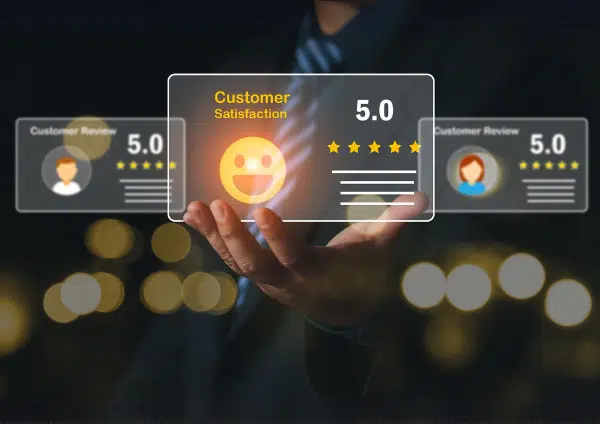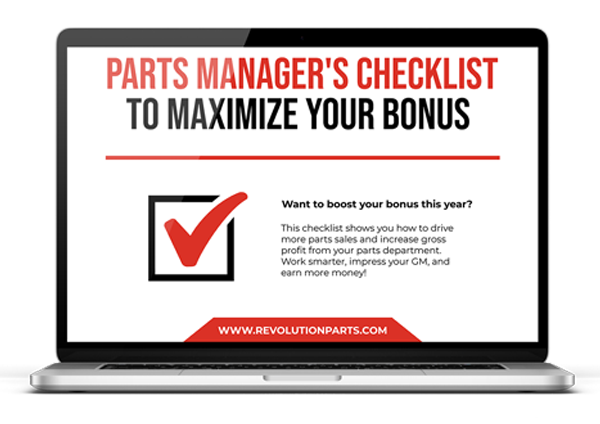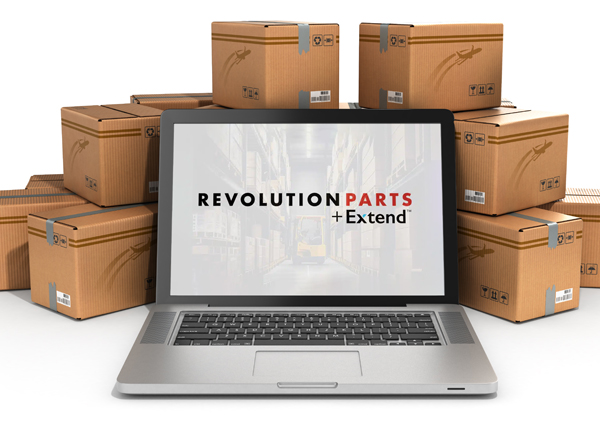Reputation management can generally make or break any business in the modern world, even parts businesses. This is particularly true for reviews left on social media profiles. Consumers nowadays research online and via social media to see what others say about their brand/business before buying. It ensures they’re making a valuable investment in their vehicles.
Building a Positive Online Presence
Did you know that 41% of customers will read three or more review platforms before using a local business? This same study showed the top social media apps consumers use to evaluate company ratings are Facebook, Instagram, YouTube, and TikTok.
Building a positive online reputation on social media is more than just review management. It strengthens customer loyalty, builds brand trust, and can increase sales by 63% when you provide meaningful social proof and positive testimonials—including how you respond to negative ones.
Leveraging Positive Reviews
Highlighting your positive reviews is the foundation of your social approval. It influences potential customers to buy with you if a past one ordered a similar part they’re interested in and had a great experience.
Leverage your positive customer testimonials on social media by asking their permission to use them for user-generated content (UGC) on your platforms. UGC resonates more with users than company content because it’s coming directly from the customer.
In addition to UGC, managing positive reviews is as important as negative ones. Thank them personally for sharing and recap exactly what your team helped with, such as:
“Thank you for sharing, John! We’re happy to hear our fuel filter fixed your diesel truck’s slow acceleration issues. We look forward to doing business with you again.”
Remember, positive testimonials don’t always generate on their own, even with happy customers. You’ll also need to encourage people to share them on social media. However, there’s some red tape involved. The Federal Trade Commission does have particular guidelines for businesses soliciting reviews from customers to prevent deceptive conduct and violations of the FTC Act, but they are fairly straightforward.
You can incentivize reviews as long as you’re not conditioning them to leave a positive one or financially bribing them. Here are three ways you can incentivize reviews:
-
Ask them to leave a review on your Facebook at the end of a customer service call when you solve their order issue.
-
Distribute customer feedback surveys that link to your Instagram profile.
-
Send automated emails a week after a customer’s order asking how they’re enjoying the part they purchased via a social media link.
Handling Negative Feedback
Negative reviews are bound to happen. Even OEMs and automotive parent brands face unhappy customers on a regular basis. They could be dissatisfied with your products, customer service, purchasing process, or simply just having a bad day.
Whether it’s within your control or not, don’t fret when you get a negative review. Consumers don’t consider perfect ratings authentic or credible if they’re all five stars. They may assume you’re removing negative reviews or paying for fake positive ones.
What you can control is how you respond to them. You may be surprised how often you can turn negative feedback into a positive experience. In fact, 76% of consumers will update their negative reviews to a neutral or positive one if companies acknowledge and solve their complaints.
One of the most common mistakes in online reputation management is not responding to negative reviews or providing vague apologies, such as:
“We’re sorry to hear you didn’t have the best experience. We strive to give the highest-quality customer service and appreciate your feedback. ”
While acknowledging and apologizing is necessary, go beyond the template-based responses. For example, if a customer’s order became damaged in transit, offer to pay for expedited shipping for the replacement part or a discount on their next purchase. Give them the contact information so your parts manager can set this up with them directly.
At the same time, don’t always give discounts or freebies each time a customer complains. Some people may take advantage of this to pay less or get free parts.
As a general rule of thumb when handling negative reviews, do the following:
-
Answer promptly within three business days and thank them for taking the time to share their thoughts.
-
Actively listen to their issue to consider improving your customer experience based on their feedback—it may be constructive!
-
Personalize each response to make it unique to their issue and remedy the situation as best as possible.
-
Don’t get defensive and place blame on others.
Every customer may not be the best fit for your company. But you can turn adversity into opportunity with a reputation management strategy on social media and beyond.
Strengthen Your Online Reputation and Boost Sales
Managing your online reputation through social media is important for your parts department. By leveraging positive reviews and handling negative feedback professionally, you can build trust, increase customer loyalty, and drive more sales.
Take your efforts a step further by selling parts online. RevolutionParts can help transform your parts department into a successful online business. Reach more customers, enhance your brand’s reputation, and increase your sales.
Schedule a demo with RevolutionParts today to see how our platform can help you achieve your goals and grow your online auto parts business.

Marketing Reach Pro
This blog was created with the help of Reach Marketing Pro, an expert in social media strategy for dealerships. They work with dealerships to strategize their social media, create engaging posts, and use the right hashtags to reach more people. Their team knows how to boost your social media presence to increase your sales.




